
Lacto-Fermented Red Sauerkraut
Organic red cabbage and mineral salt processed into an anaerobic environment for a least a month, as lacto-bacteria transform the cabbage into a complex, sour, tangy, and delicious side dish with insane health benefits!
Equipment
- 8-10 ½ gallon mason jars
Ingredients
- 15 red cabbages
- mineral salt
Instructions
- Assemble your equipment and ingredients. If you can find a second person to help, the process will be more fun and go much quicker!
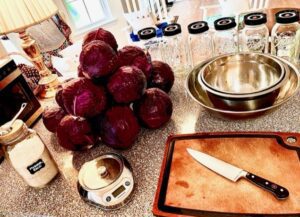
- Peel outer cabbage leaves off 2 cabbages and compost or give to your chickens.
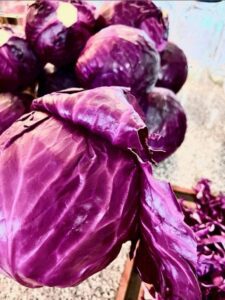
- Chop two cabbages, composting the fibrous inner stems.

- Tare digital scale to read 0 with an empty bowl on top, then measure 800 grams of chopped red cabbage.
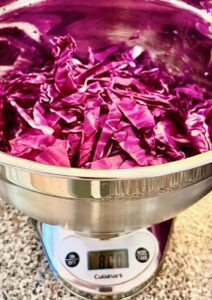
- Add 1 tablespoon of mineral salt to 800 grams of red cabbage.
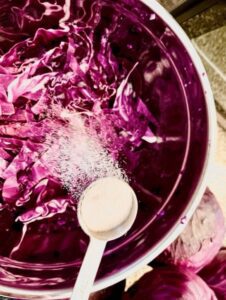
- Toss chopped cabbage with mineral salt, then resume chopping new heads of cabbage.
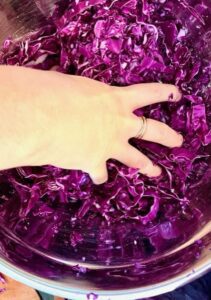
- Chop and measure the next 800 grams of cabbage.
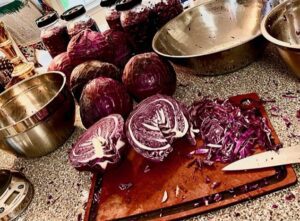
- Meanwhile, the resting salted cabbage will begin to release its juices, making the packing process much easier.

- Once the first 800 grams has cabbage juice gathering in the bottom of the bowl, heavily massage the cabbage to release as much brine as possible.
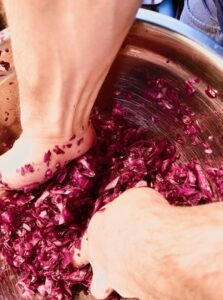
- Add handfuls of massaged cabbage into your mason jars, packing them down with your fist as you go.

- The goal is to create enough brine with your packing that it fully immerses the cabbage each time you use your fist to pack down the cabbage. Continue packing until the jar is a little over ¾ full.
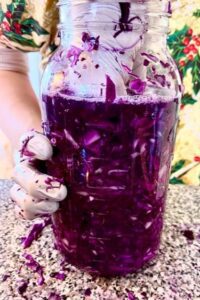
- Repeat steps 1-11 until all your cabbage is processed into your jars.

- Seal each of your jars with a fermenting lid, then rinse extra cabbage pieces/brine off of your jars. Place jars in a rimmed pan to collect any brine that leaks out overnight.

- By the next morning, your jars should have produced enough brine to fill the last 1/4 of the jar completely full. You may see bubbles inside the jars, or they may be leaking or bubbling through the top of the fermenting lid. These are all good signs!
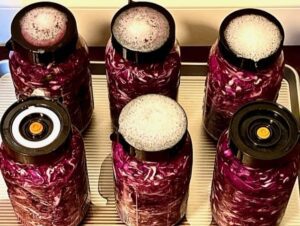
- Allow your sauerkraut to ferment in a cool, dark location for at least 30 days before consuming. (We typically use the bottom of our pantry.)
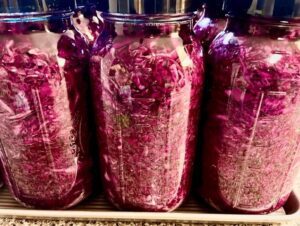
Notes
If you've never made sauerkraut before and want to try making a small amount, use 2-3 heads of chopped cabbage, and measure 1 tbsp of mineral salt per 800 grams. 800 grams will fill approximately 1 quart-sized mason jar.
If desired, you can use a food processor instead of hand-processing the cabbage. A food processor will create much smaller pieces of cabbage that release their juices quicker and are easier to pack. However, after trying both ways, I prefer the taste and texture of the longer, hand-sliced strips of sauerkraut. It's all about your personal preference!
Tried this recipe?Let us know how it was!